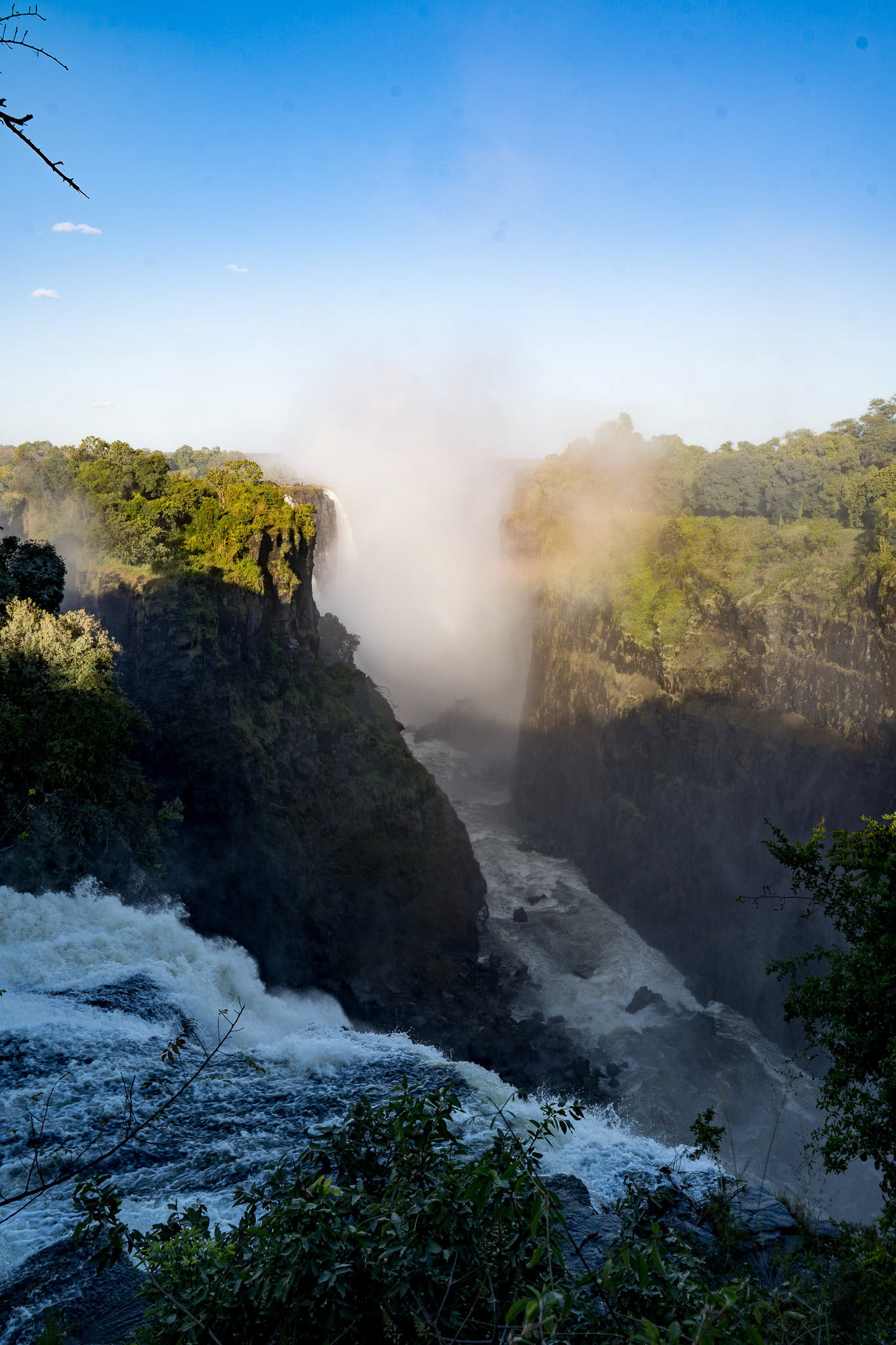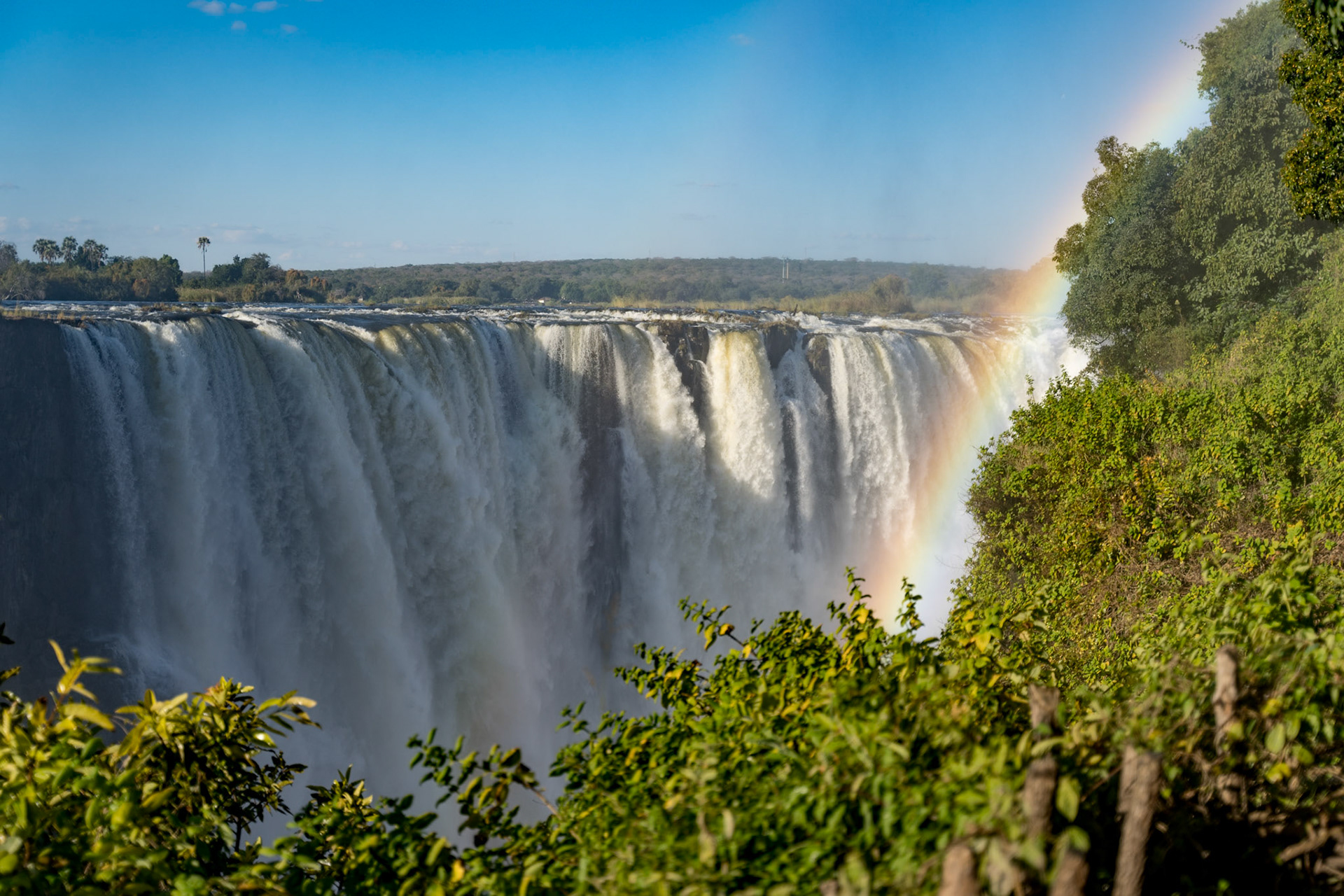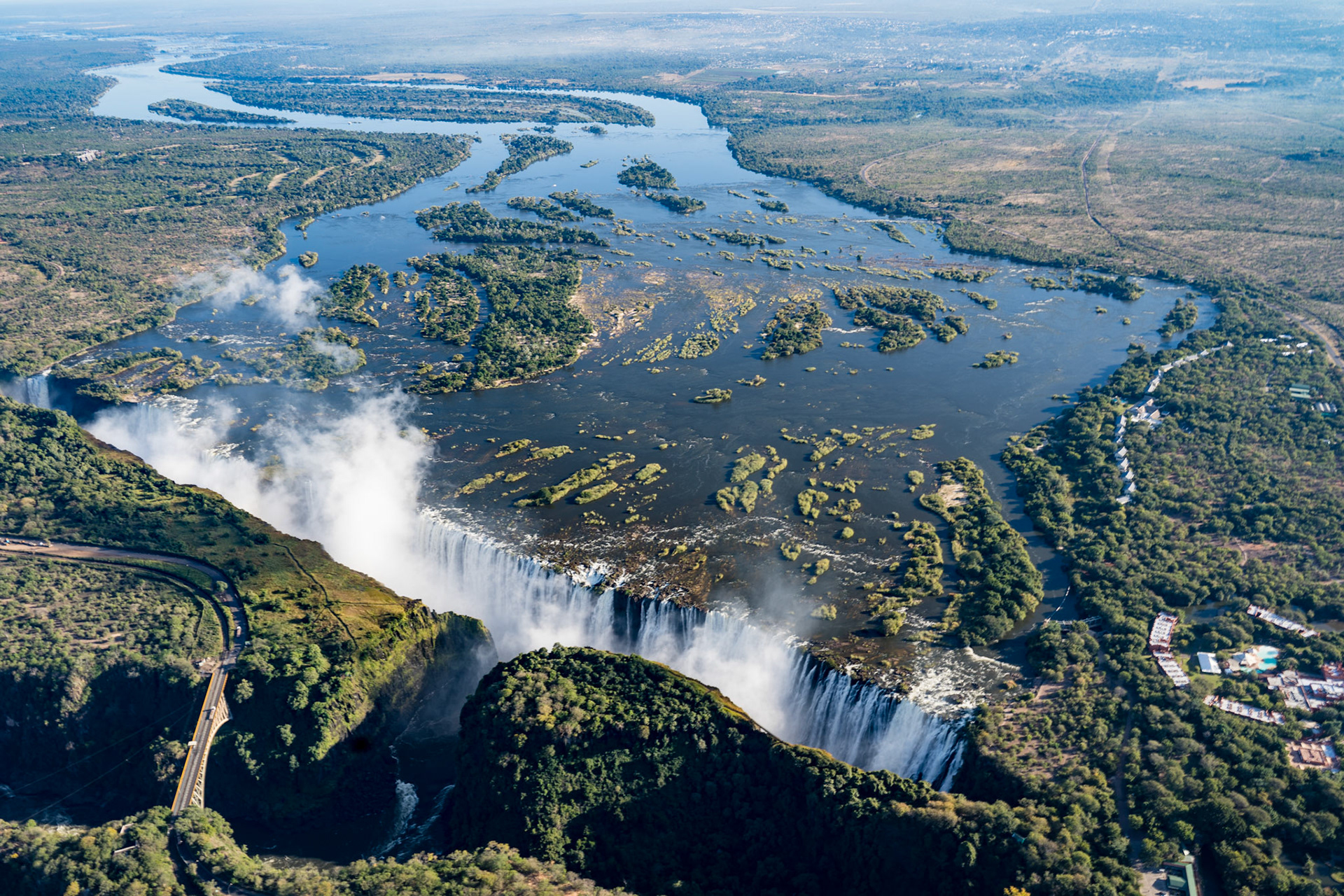Victoria Falls has long been regarded as one of the natural wonders of the world and a must-visit place in Africa. After hearing for many years about how fantastic it was I was skeptical that it would live up to the hype. I had seen countless photos and documentaries breathlessly describing how impressive the falls were and I thought there was no way it could like up to the hype. Was I wrong! It was even more impressive than I could have imagined!
The falls, along the Zambizi River that separates Zimbabwe and Zambia, is over 1,700 meter (5,600 ft) feet wide and at its highest point drops over 100 meters (300 feet). It is twice as tall as Niagara Falls and twice as wide as the famous Horseshoe Falls portion of Niagara Falls. The spray from the falls normally rises 400 meters (1300 feet) into the air and can be seen from over 30 miles away.
A Brief History
In the native Lozi language the falls was called Mosi-oa-Tunya, "The Smoke That Thunders." It got it current name from the famous Scottish missionary and explorer David Livingstone, who was believed to be the first European to see the falls in 1855. Livingstone named it Victoria Falls after the Queen Victoria of England but also noted that it was known as Seongo or Chongwe, which means "The Place of the Rainbow" as a result of the constant spray. Livingstone wrote of the falls, "No one can imagine the beauty of the view from anything witnessed in England. It had never been seen before by European eyes; but scenes so lovely must have been gazed upon by angels in their flight."
While Livingstone was the first European to see the falls, its existence had been known to outsiders for hundreds of years. It is reported that a 1715 map drawn by French cartographer Nicolas de Fer shows the falls marked in the correct position. A map from c. 1750 drawn by Jacques Nicolas Bellin labels the falls as "cataractes" and notes a settlement to the north of the Zambezi as being friendly with the Portuguese at the time.
Europeans began to settle near Victoria Falls around 1900 and it quickly became a tourist attraction. When Cecil Rhodes planned his railroad from Capetown to Cairo he demanded that it pass close enough to the falls that passengers stopped on the bridge over the canyon could feel the spray from the falls. The Victoria Falls Hotel was built in 1904 to service railroad passengers coming to see the falls.
In 1989 the falls was named as a World Heritage site by the United Nations Educational, Scientific and Cultural Organization (UNESCO) as having cultural, historical, scientific or other significance.
Seeing the Falls
An estimated one million people visit the falls each year. While the falls are known around the world, the majority of visitors are locals from Zambia and Zimbabwe, not foreign tourists. The number of international tourists is increasing as more airlines add service to the Victoria Falls airport in Zimbabwe and Livingstone airport in Zambia.
There are three main ways to see the falls, on the ground from the Victoria Falls National Park on the Zimbabwe side and the Mosi oa Tunya National Park on the Zambian side. We only visited the park on the Zimbabwe side, but the general feedback we heard was the the Zim side was the better place to see the falls and the Zambian side was the better place to feel the falls.
A third option, and one that I can't recommend strongly enough, is to see the falls from the air. There are different companies that offer helicopter, and for those more adventurous souls, ultralight flights over the falls. One thing to remember is that while you can take your camera in the helicopter, most (if not all) ultralight operators do not allow passengers to use their phones or cameras while in flight.
Walking the Zimbabwe Side
The most popular way to see the falls is to follow the path through the Victoria Falls National Park on the Zimbabwe side. Entrance to the park costs (as of 2019) about $30 for international visitors, $20 for SADC residents, and less for Zimbabwe residents. The park hours vary by season but are generally from around 6 am to 6pm, with evening hours some of the time.
Once in the park, there is a souvenir stand, bathrooms, a restaurant, places to purchase snacks, and vendors selling plastic ponchos.
The main attraction is the trail that walks along about 75% of the face of Victoria Falls. The trail is well-marked, well-maintained, and constructed so that it is not slippery even when covered with spray from the falls. The trail looks longer on the map (below) than it is in reality. It took us about three-and-a-half hours to walk from Devil's Cataract to Danger Point and back. We walked slowly and paused frequently to wait for the spray or for other visitors to get out of the way to take photos.

The viewpoints on the trail are numbered beginning with 1 on the west end and ending with 16 on the east end. We will start our photo tour at the west end, including the Devil's Cataract.
The Devil's Cataract


The Main Falls
Moving east from the Devil's Cataract we come to the Main Falls, defined by the Cataract Island on the west and Livingstone Island on the east. Just west of Livingstone Island is The Devil's Pool - a naturally-occurring infinity pool at the edge of the falls that people can swim to and sit in.

Horseshoe & Rainbow Falls
Moving east from the Main Falls and Livingstone Island we come to the side-by-side Horseshoe Falls and Rainbow Falls.

Danger Point & KnifesEdge
The easternmost point along the trail facing the falls is the aptly-named Danger Point. This rocky point has no railings or fences - only a faded sign warning of danger. It was drenched in rain, windy and slippery. Not the ideal conditions to take a photo (though other people were).
Walking back from the point I was able to get a nice view of Knifesedge, a landmark on the Zambia side of the border. Knifesedge was constantly bathed in spray and had its own small waterfalls of coming down its face.

Victoria Falls From The Air

The walk through the park was a great opportunity for me to see the falls, hear the thunder, and feel the spray on my face but it wasn't until I took a short, 15-minute, helicopter ride over the falls that I had a feel for how big it really was. I think it was good to have walked it first because it gave me a sense of scale when I saw it from the air. We went early in the morning when the sun from the south and east illuminated the face of the falls with some beautiful light.




The Final Word
For anyone who has the opportunity and is thinking of going to Victoria Falls all I can say is "Go!" No pictures (including mine) or video (even an 8K video on a huge screen) can compare with seeing the falls in person.